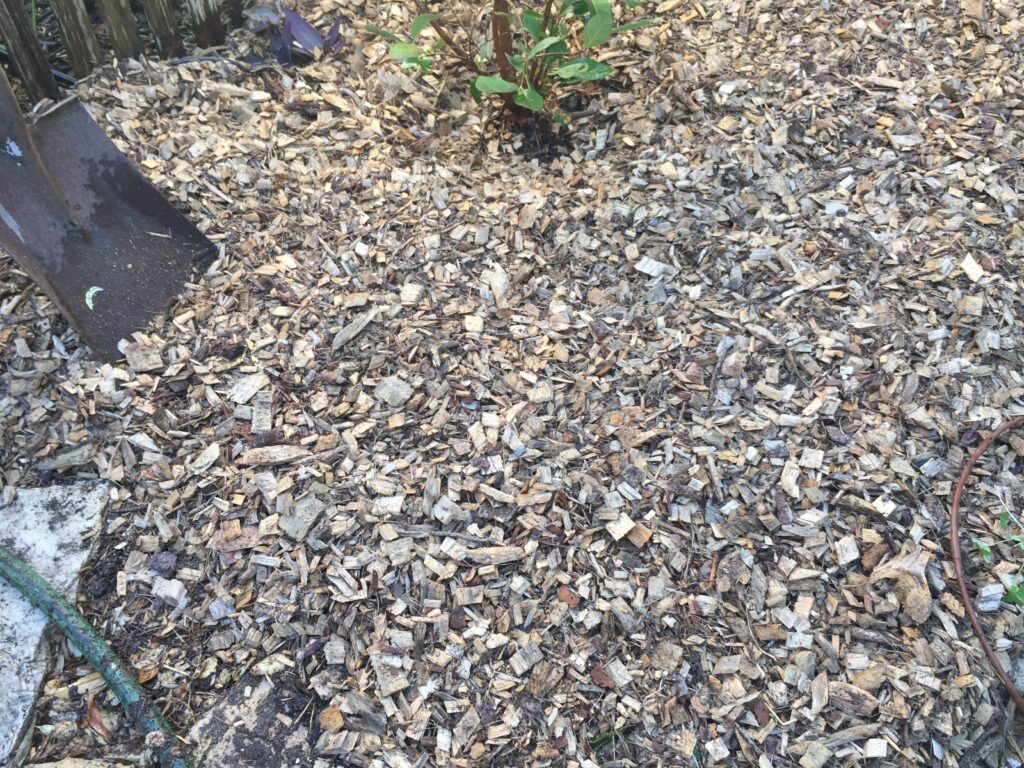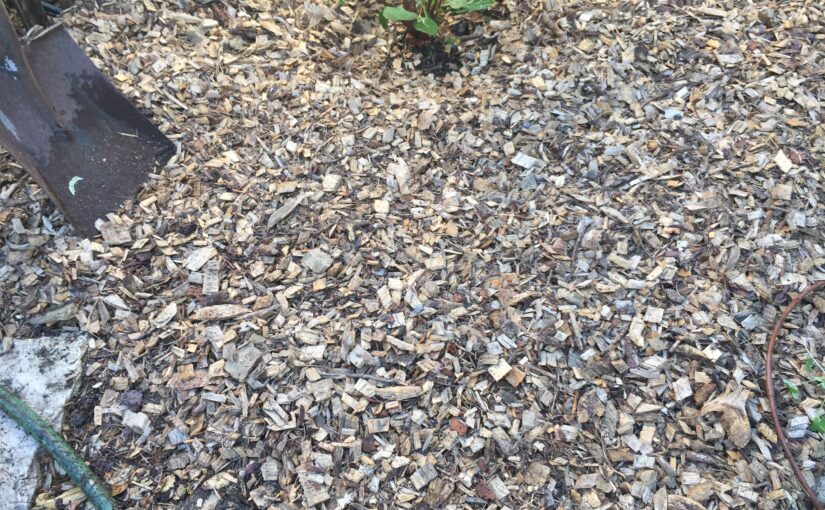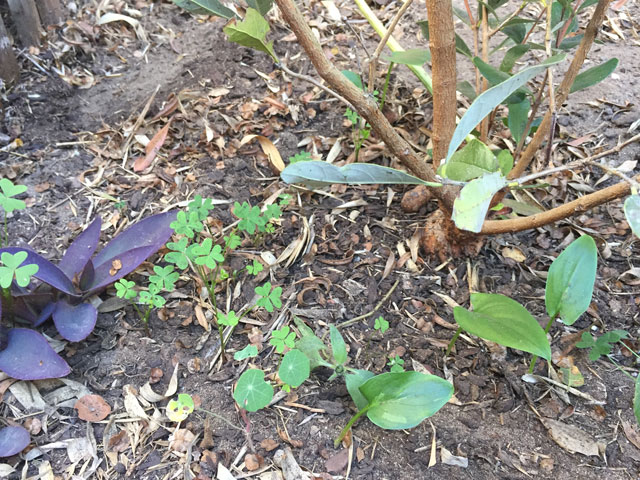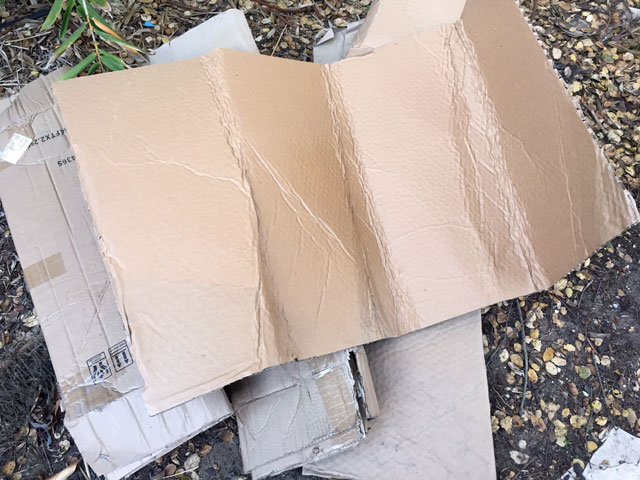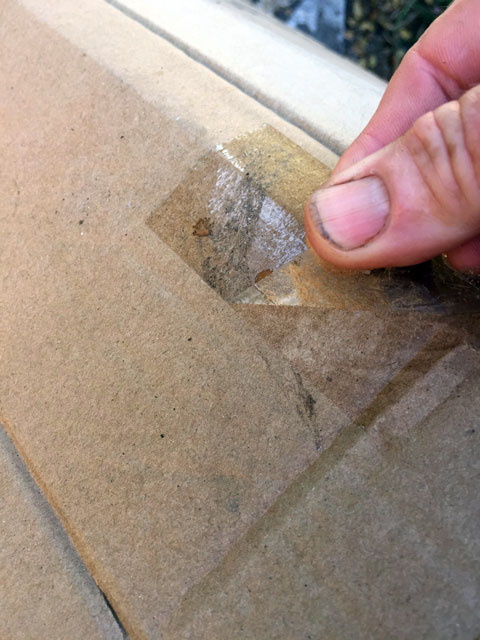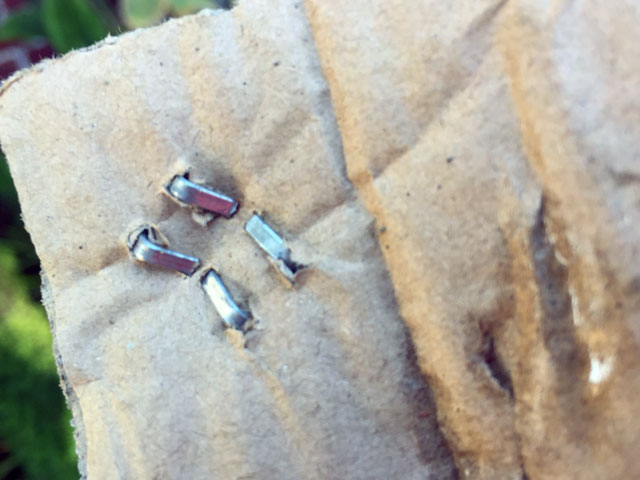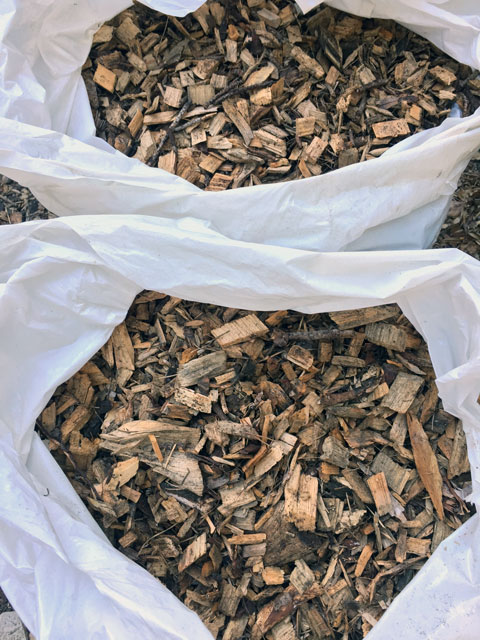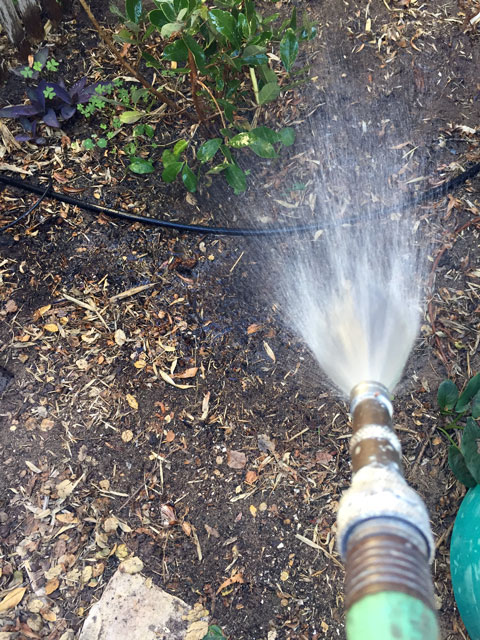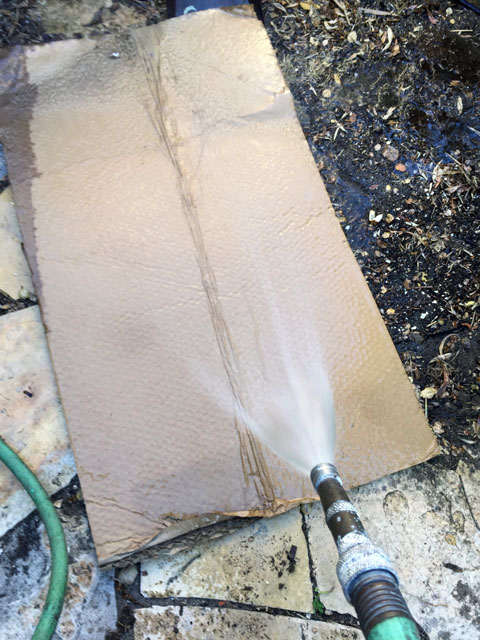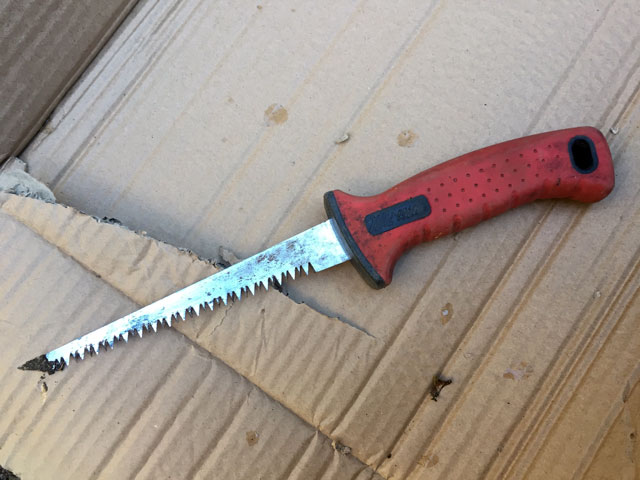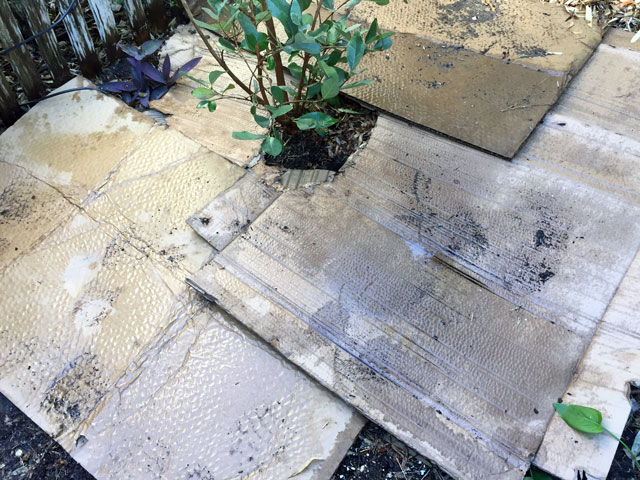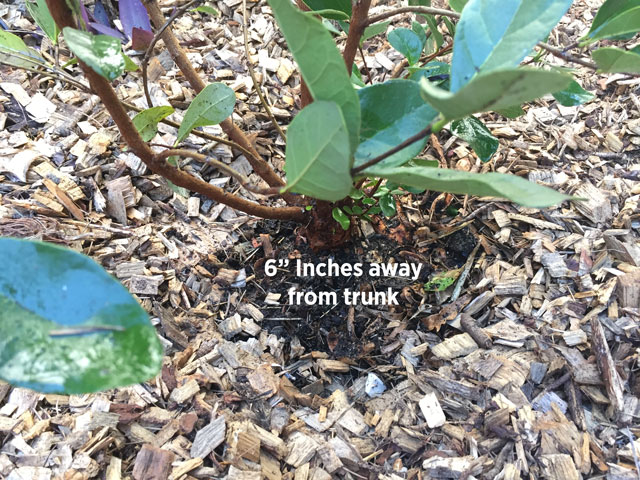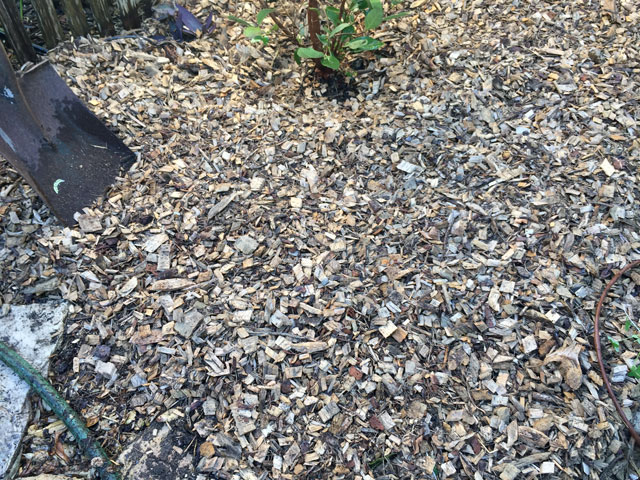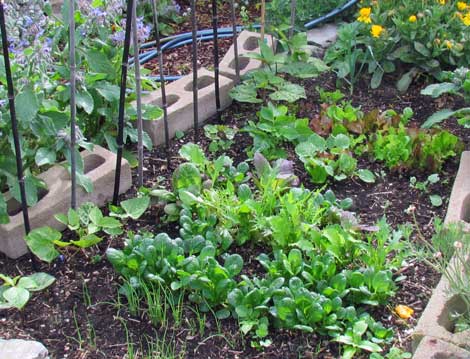Got a weedy lot? A dying lawn that needs replacing? Want to improve soil for a new landscape project? Then it is time to consider the benefits of sheet mulching.
What is sheet mulching?
Imagine laying out a magic carpet that improved the soil but decreased the need to weed and water too. That magic carpet is a layering technique that utilizes recycled cardboard, compost and wood chips. It’s really very low tech and simple to do in most any garden application.
Here are the basic steps:
- Remove or cut back any tall or thick stemmed plant materials that will poke up under the cardboard. Low lying weeds or weed whacked grasses can just be covered up with cardboard because they will just breakdown and add to the soil.
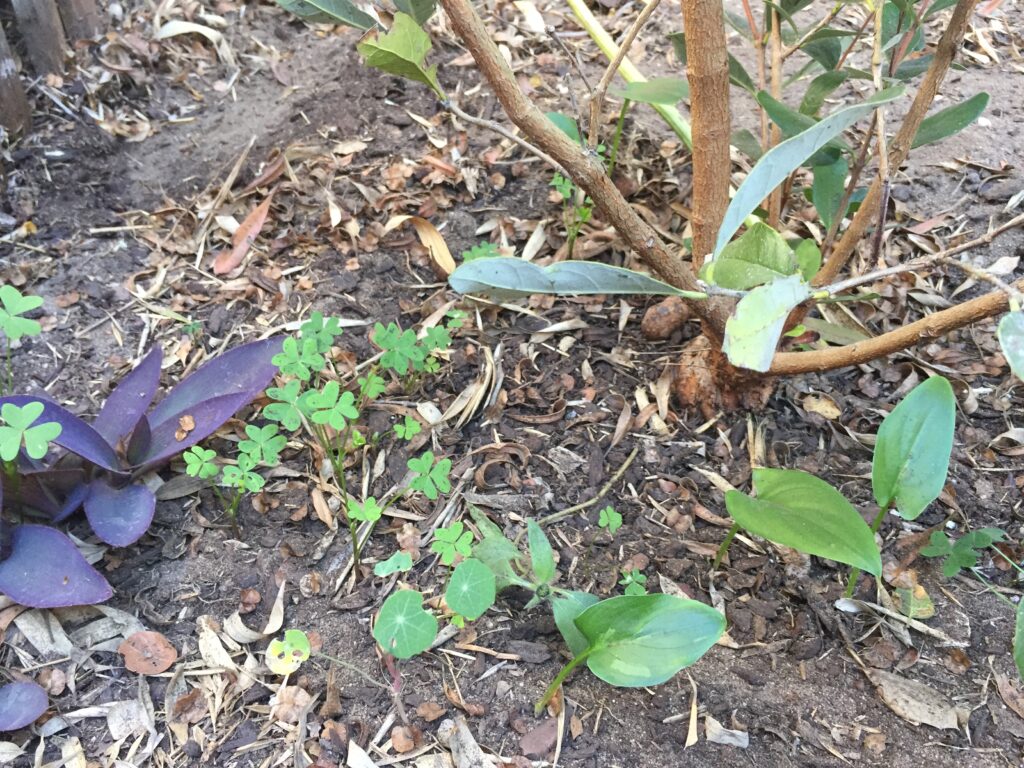
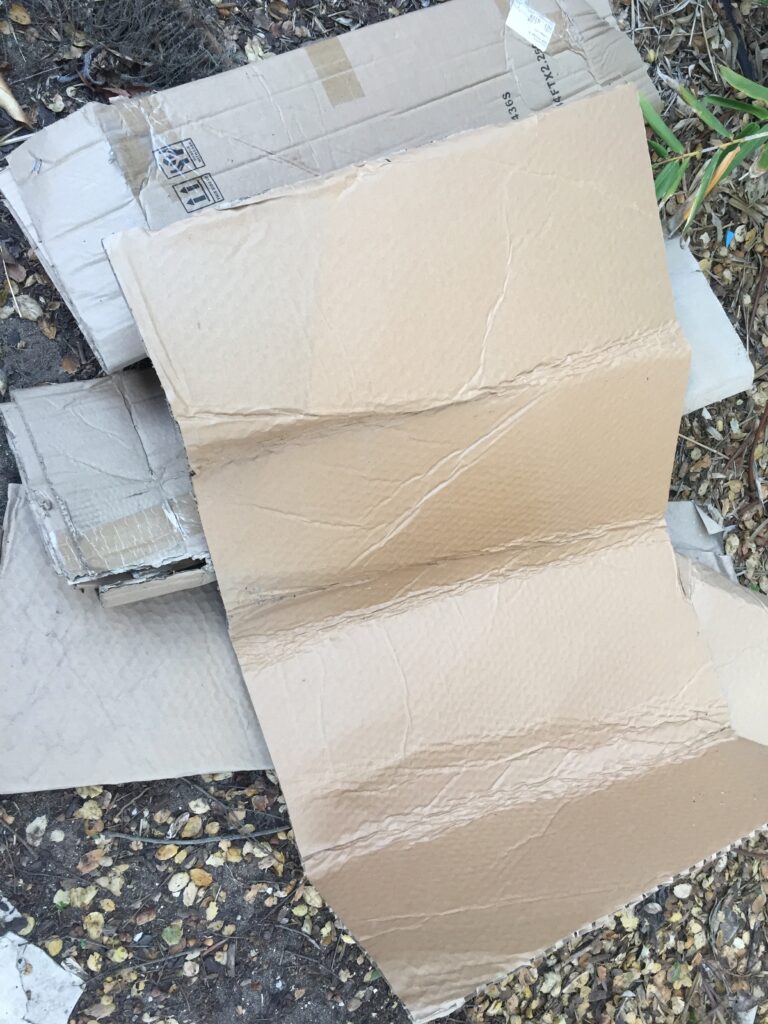
Collect lots of cardboard!
- There will need to be some cardboard collecting in advance of the sheet mulching event. Look for non-waxed large boxes that can be broken down flat. Smaller pieces can be used to fill in and around gaps in the cardboard so get a range of sizes. It is okay to double up cardboard in problem areas to really squelch the weeds.
- Remove any staples, tape or packing slips in sleeves so that the cardboard has no plastic and metal bits attached to it. You do not want to be finding long pieces of packing tape floating up through the chips over time!
- There is cardboard that can be purchased in big rolls which may be more convenient but most scavenged cardboard is free.
- Newspapers can be used to if put down thickly.
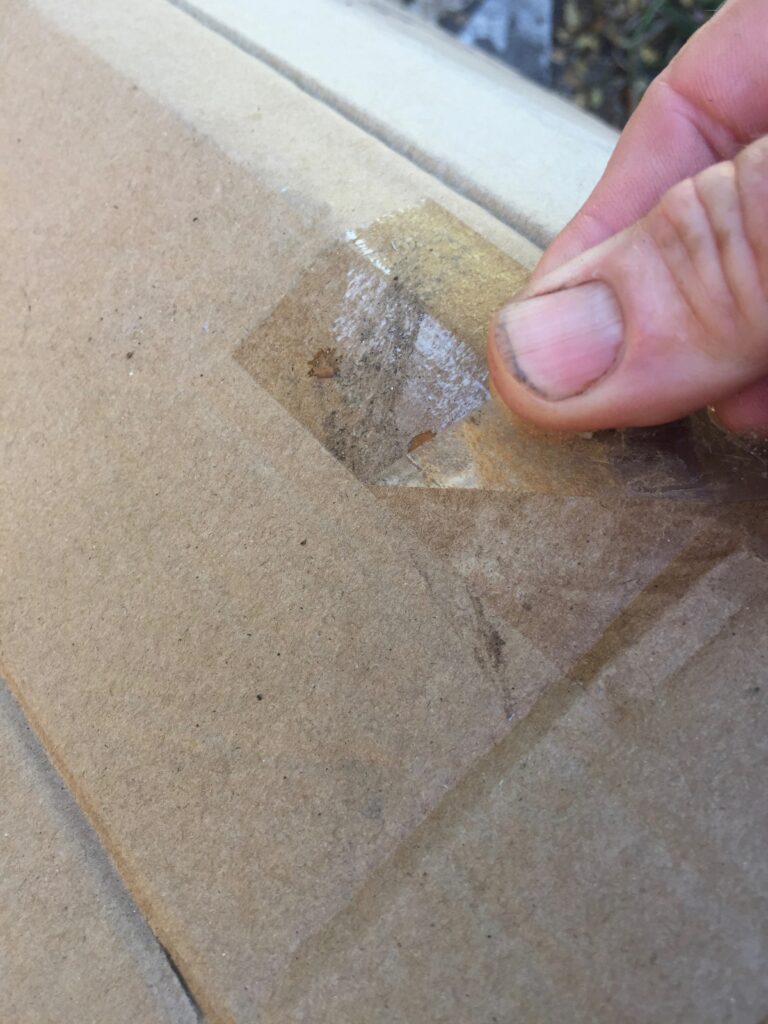
Get all surfaces wet
- Wet down the soil that the cardboard will be covering.
- The cardboard should be made damp as well. This will help keep the the cardboard in place and keep edges from curling up through the mulch.
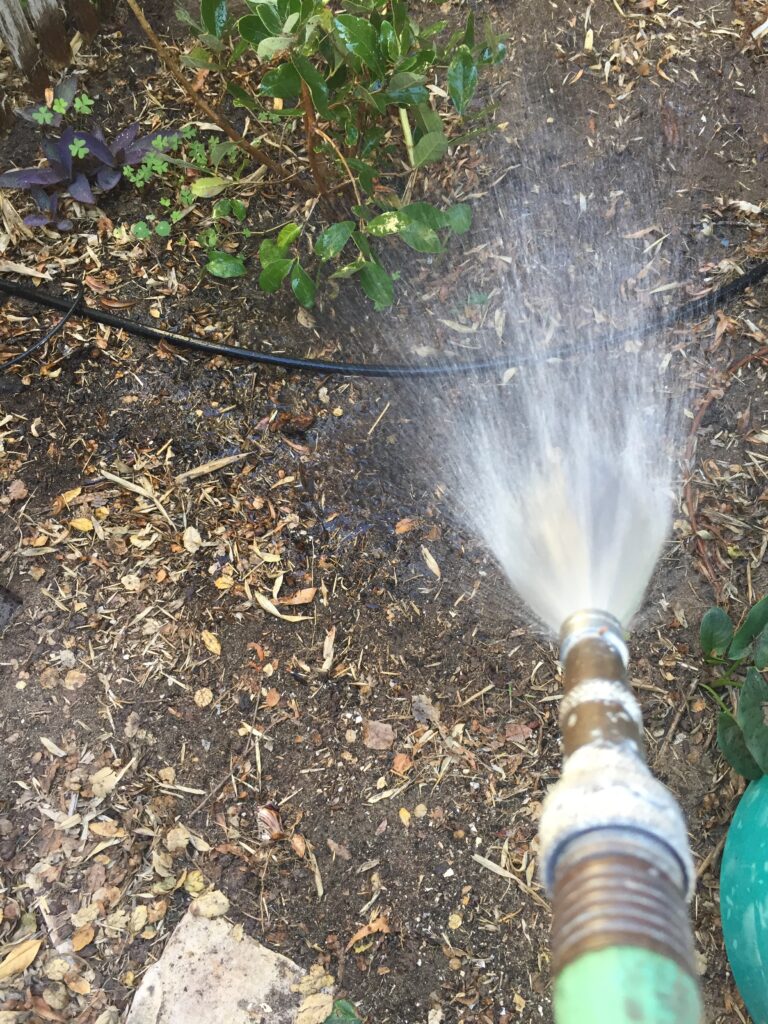
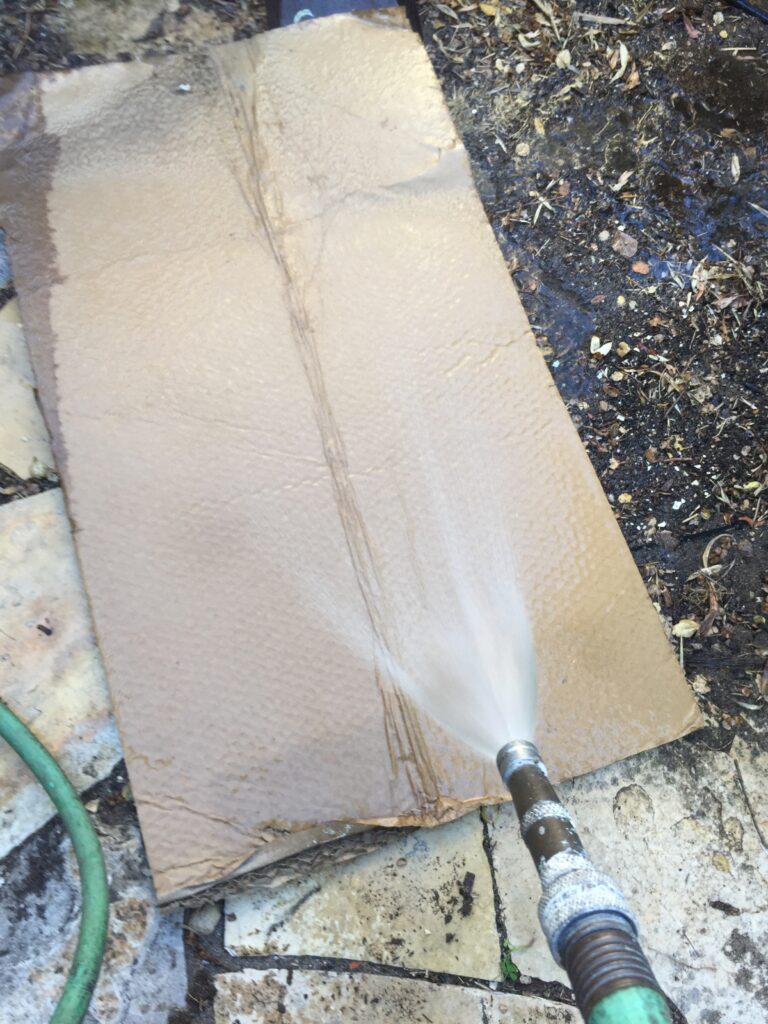
Laying down the cardboard
- Cardboard should be laid down to cover the soil surface. All sheets should overlap by at least 4 inches so not surviving weeds can grow through. The cardboard stops light from reaching seeds and the plants that were covered. This generally kills most of the weeds with a few notable exceptions (oxalis, Bermuda grass, ivy, poison oak, convolvulus, and a few more very hard to kill plants).
- Wood chips are spread over the wetted cardboard at about 4-6 inches deep. Don’t skimp here or the cardboard will dry out and become visible. Not a good look!
- Wood chips from the thickest part of the tree last the longest, but chips that have lots of leaves, needles and small branches contain more nutrients. Very green chips will break down faster and will need to be replenished sooner.
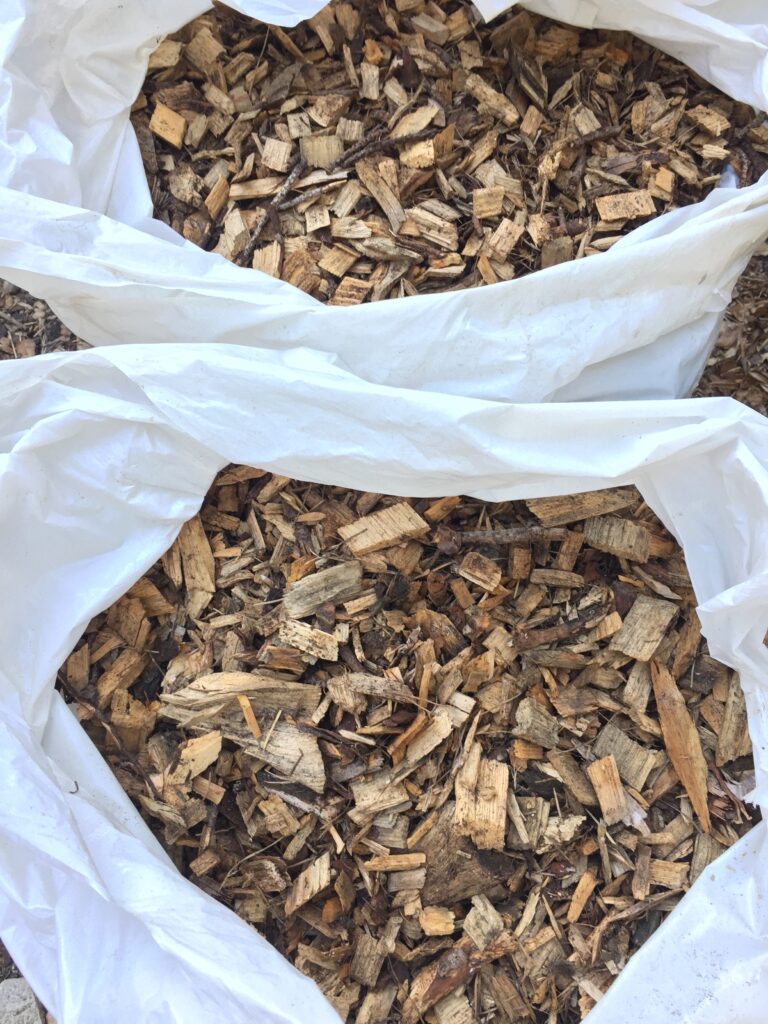
Final details
- Make any adjustments to the chips and cardboard to get best coverage. You want at least 3-4″ of chips with no cardboard showing through.
- If the the cardboard abuts walkways or edgings, dig out along the edge and push the cardboard down a bit. Cover with the soil removed from the edge so the cardboard does not poke up later.
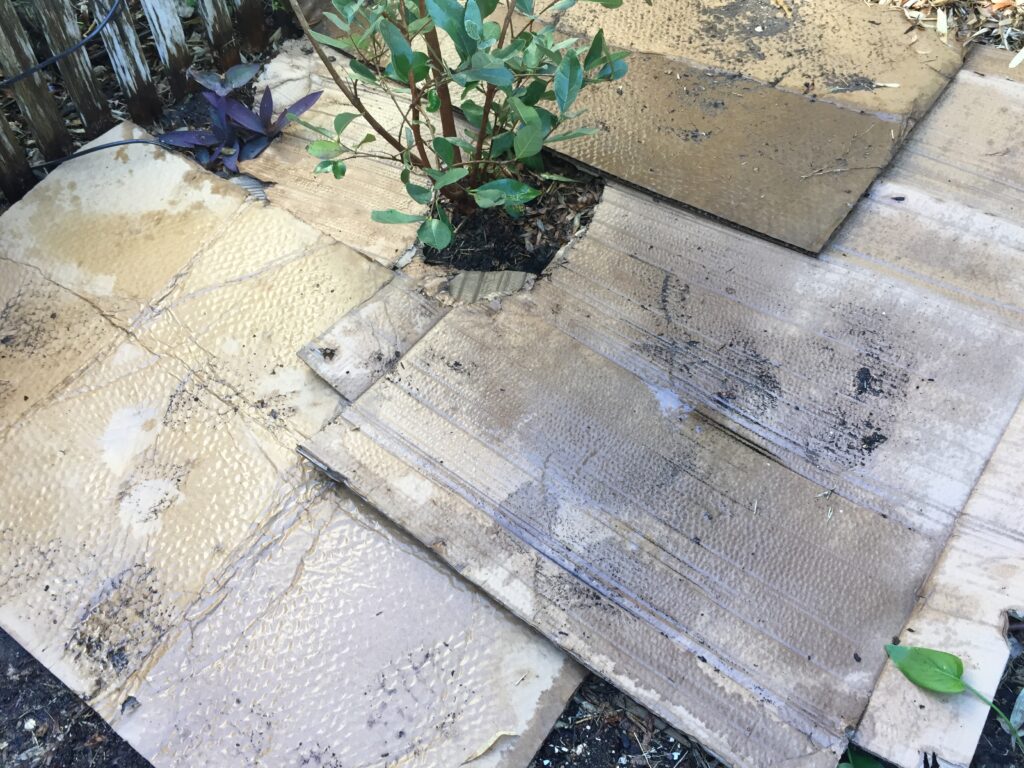
Drip system considerations
- If you are installing a drip system – lay out the tubing over the cardboard, mark where the plants will go in with emitters and then hide the 1/2″ and drip tubing with the chips.
- If the drip is already down, cover with the cardboard but keep the emitters visible where they water existing plants. The cardboard will break down in about a year and add organic matter to the soil.
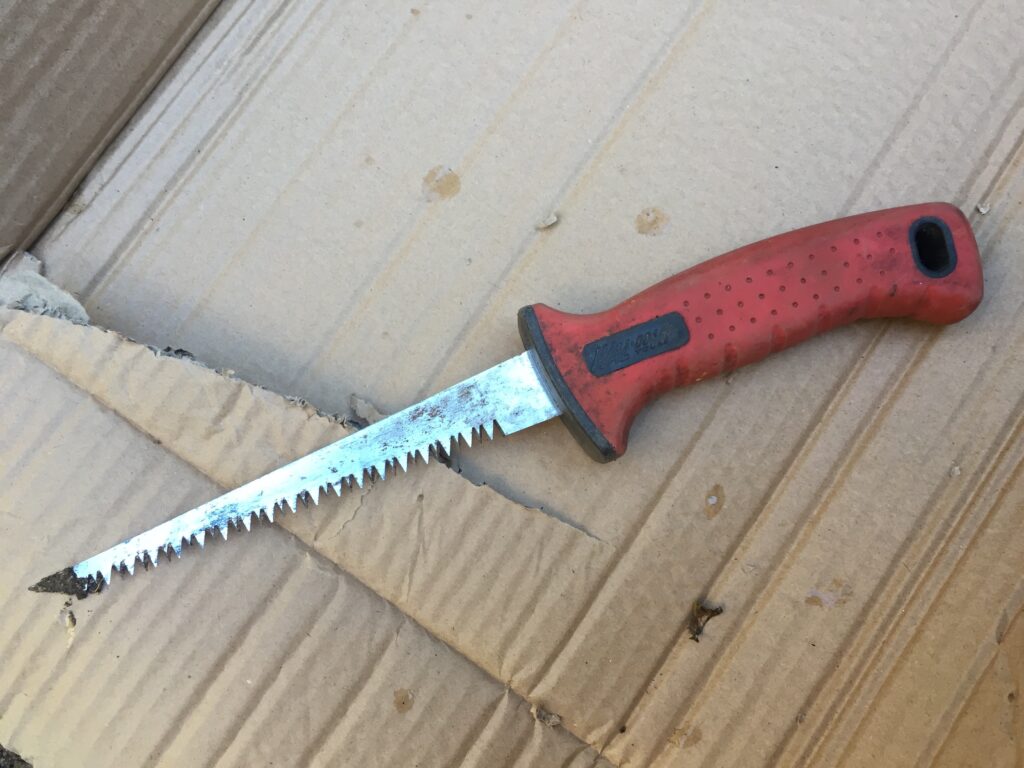
When adding plants after sheet mulching
- On a new plant installation I use a drywall keyhole saw to cut through the wet cardboard to open an area to pop plants into the ground. A box cutter (often recommended with sheet mulching) is not equal to the task in my opinion.
- When planting through the chips with new plants it is best to position the plant a little higher than the soil as the chips will break down and fill in around the root zone—possibly covering the crown and causing the plant to fail.
